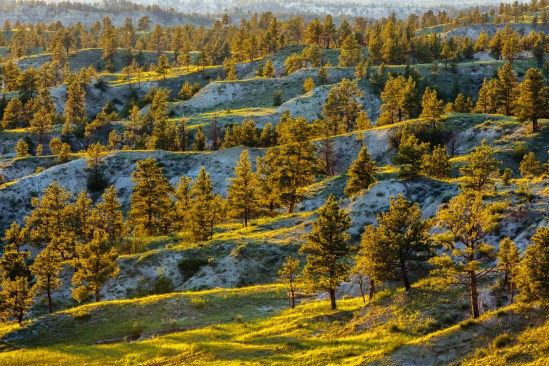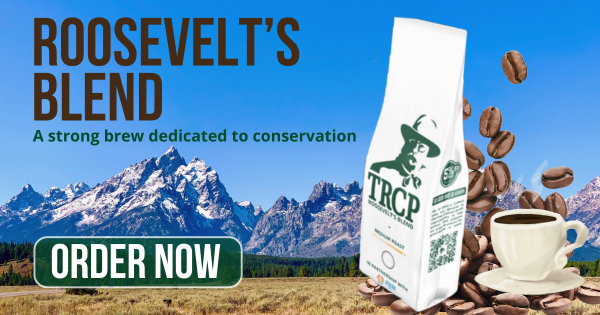Ambassador Alec Underwood’s commitment to the hunt—and to conservation—runs deep
Launching this fall, TRCP’s ambassador program calls on sportsmen-conservationists to help advance our goals by offering local volunteer support. These #PublicLandsProud hometown heroes are not willing to sit idly by as the wild places we love are lost. They know there’s more to our sports than just hunting, fishing, and going home.
Meet Alec Underwood, our first volunteer ambassador out of Missoula, Montana. One thing you can say about Underwood is that he finishes what he’s started—after blood-trailing a bull elk to where it was bedded down, he stalked up in just his socks, eventually losing track of where he placed his boots in the tall grass. He packed out nearly two miles in just his stocking feet. We’re sure Underwood’s commitment to conservation is just as steadfast, and we’re proud to have him stepping up for sportsmen and women in Montana.

TRCP: What’s your earliest memory in the outdoors and how do you spend your time outside these days?
Underwood: My earliest memory in the outdoors is standing near a small stream in the Adirondack Mountains of upstate New York, where I grew up, with my dad. We didn’t have fly rods, but he showed me where to look for trout by throwing small twigs behind boulders and in eddies. I remember watching small brook trout come up and try to eat the twigs, and I thought that it was the coolest thing in the world. Those small moments inspired my whole lifestyle, which consists of fishing the countless great trout rivers of the West and chasing elk in the mountains of Montana each fall.
TRCP: How do you see yourself helping us achieve our conservation mission?
Underwood: I’ve worked for several state fish and wildlife management agencies, in conjunction with federal land management agencies, and that has given me a broad perspective of how successful conservation policies are achieved on the landscape. This understanding, plus my passion for conservation and background in wildlife biology, will certainly help me further the TRCP’s mission of guaranteeing all Americans quality places to hunt and fish, in whatever small way I can.
TRCP: How can everyday sportsmen make a difference for fish and wildlife? Why is it so important?
Underwood: I think that it’s quite simple—it all starts with passion. Sportsmen who use these resources must be devoted to protecting it. If you really care, don’t just pay your membership dues to whichever conservation organization you support. Go to that organization’s meetings. Invite your friends to those meetings. Lead by example and inspire others to care as much as you do.

TRCP: What’s the most pressing conservation issue where you live?
Underwood: The transfer of our federal public lands to state control is a real threat that would result in our treasured public lands disappearing forever through privatization. Sportsmen need to understand the severity of this issue. Once it happens, these lands will no longer be protected. The enormous amount of public lands and wilderness that we currently own (especially in the western US), and the opportunity for all of us to access these lands, is an incredible part of our heritage. Let’s keep it that way.

TRCP: What current projects are you working on for the TRCP?
Underwood: I have been helping the TRCP become more involved in the BLM’s Regional Management Plan (RMP) planning process for the Missoula field office. The plan will set goals, objectives, and direction for approximately 156,000 acres of BLM land in the Missoula area. To fully comprehend the current status of these lands and how they might be affected with the new RMP, we’ve been meeting with officials from both Montana Fish, Wildlife & Parks and the BLM. Being more involved with the revision process is something that can only help to strengthen the TRCP’s existing relationship with the BLM.
TRCP: What has been your most memorable hunt?
Underwood: The most memorable was definitely when I took a raghorn bull with my bow last September. After calling the bull in to about seven yards, I couldn’t pass him up. My aim was true, but he bedded down and didn’t expire. So I took off my boots and made a final, short stalk. Hit again, the bull ran down into a draw and finally expired. Tall grass surrounded me, and I suddenly realized my mistake: I discarded my boots into the sea of grass without marking them on my GPS. Thirty minutes of searching later, I decided to quarter the elk before it got too hot. Then, resuming my search, I retraced my steps over and over until I accepted that I was going to have to do the unthinkable. I loaded both a front and hind quarter – as well as the backstraps – and began the most painful 1.8 mile bushwhack of my life. Every step of that first trip out, in just my socks, ached. I had a few buddies come with me to help pack out the last two quarters and the head, and though we combed that small slope for another twenty minutes, we never found those boots. My feet were sore for almost a week after, but I knew I had a good story. (And if you find a pair of Irish Setters in a burn, please let me know!)

TRCP: What’s still on your bucket list?
Underwood: A DIY Alaska caribou hunt is definitely on there.
TRCP: What’s your favorite Theodore Roosevelt quote?
Underwood: “In a civilized and cultivated country wild animals only continue to exist at all when preserved by sportsmen. The excellent people who protest against all hunting, and consider sportsmen as enemies of wildlife, are ignorant of the fact that in reality the genuine sportsman is by all odds the most important factor in keeping the larger and more valuable wild creatures from total extermination.”
To find out more about the TRCP Ambassador program, please contact TRCP’s deputy director of Western lands, Coby Tigert, at CTigert@trcp.org or 208-681-8011.




















